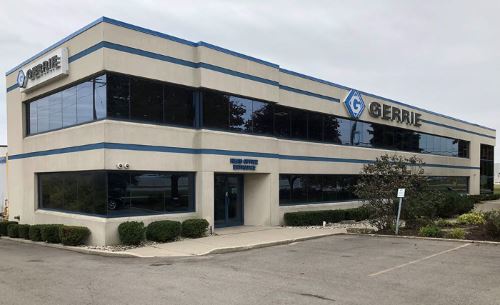Digital Industry Solutions Blog
The Growing Cybersecurity Threats to Manufacturing: Is Your Critical Infrastructure Protected?
September 26, 2024

Ransomware attacks against midsize and large corporations are becoming one of the most critical threats in the industrial sector, with manufacturing companies often seen as an easy target from which to profit. These attacks can halt production, disrupt supply chains, and lead to significant financial losses. As IT and OT systems become more interconnected, the risk of ransomware grows, putting operations on the edge.
The convergence of Information Technology (IT) and Operational Technology (OT) systems has revolutionized the way industries operate, for example, by enabling real-time production monitoring and lean manufacturing practices. However, this increased connectivity has also introduced new vulnerabilities, making industrial systems an attractive target for cybercriminals.
IT professionals in midsize and large manufacturing industries face vast challenges in securing these systems. They must protect outdated legacy systems, ensure compliance with complex regulatory standards, and manage limited budgets while keeping operations running.
In this field, the stakes are extremely high: a successful cyberattack can result in costly downtime, production losses, and severe reputational damage. In this post, we will explore some of the most critical cybersecurity challenges manufacturing organizations face and how valuable a trusted digital solutions partner can be in helping them protect critical infrastructure from cyber threats.
Challenge #1 - Legacy OT Systems: Outdated and Vulnerable
One of the most significant cybersecurity challenges facing the manufacturing industry is the dependency on legacy systems. Many industrial environments still rely on outdated systems that were not designed or implemented with modern cybersecurity in mind. These systems often lack basic security features such as encryption and access controls, making them highly vulnerable to cyberattacks and unauthorized access.
Legacy systems are particularly challenging because replacing or upgrading them is often costly and may cause planned and unplanned disruption to ongoing operations. Manufacturing companies are often hesitant to take systems offline for upgrades due to the potential loss of production, making them prime targets for cybercriminals.
Challenge #2 - The IT/OT Convergence Double-Edged Sword
Integrating IT and OT systems has unlocked new levels of efficiency and innovation in manufacturing. OT systems, which include machinery, sensors, and controllers, are now interconnected with IT systems for improved data analysis, predictive maintenance, and overall operational efficiency. However, this convergence also creates a larger attack surface, exposing OT systems to cyber risks that were previously confined within the manufacturing facility.
In the past, OT systems operated in isolation, with limited connectivity to the outside world. Today, however, they are increasingly connected to corporate networks and the internet, which introduces new vulnerabilities. Cybercriminals can now exploit these connections to gain access to critical OT systems, potentially causing disruptions to production lines and even compromising the safety of workers and the public.
Challenge #3 - Navigating Tighter Regulatory Compliance Requirements
For many manufacturing sectors, complying with industry regulations such as the National Institute of Standards and Technology (NIST) Cybersecurity Framework and the International Organization for Standardization (ISO) standards is now mandatory. These regulations provide a framework for securing critical infrastructure, and failure to comply can result in significant penalties and legal consequences.
However, staying compliant with these regulations can take time and effort. The requirements are often complex and constantly evolving, and many organizations lack the internal expertise to navigate the regulatory landscape effectively. Furthermore, achieving and maintaining compliance can be expensive, especially for companies with limited cybersecurity budgets.
Challenge #4 - The High Cost of Cyberattacks on Production Losses and Reputational Damage
Downtime is one of the worst enemies of every manufacturing company. Every minute of lost production due to a cyber incident can result in significant financial losses, not to mention the potential damage to a company's reputation. In some cases, a cyberattack can shut down an entire facility, leading to days or even weeks of lost production.
Cybercriminals are increasingly targeting manufacturing companies with ransomware attacks, which can cripple operations and force organizations to pay large sums of money to regain access to their systems. The financial impact of these attacks can be devastating, with some companies losing millions of dollars in a single incident.
Act Now to Protect Your Manufacturing Operations
In summary, failing to address these and other vulnerabilities properly can lead to costly downtime, production losses, and reputational damage. At Gerrie Digital Industry Solutions, we provide tailored industrial cybersecurity solutions designed to meet manufacturing companies' unique needs. With our expertise in IT and OT environments, we help secure operations, ensure compliance, and future proof against evolving cyber threats.
Don't wait until it's too late. Schedule a technical consultation with our cybersecurity experts today and take the first step towards securing your manufacturing operations.
Written by
Ricardo M. Costa
Senior Content Writer, Smart Manufacturing Solutions
Where Do I Go Next?
Schedule a complimentary technical consultation with our digital industry solutions experts for a tailored solution that fits your needs.
Contact Us Now To Learn More!
Head Office - Burlington, ON - Canada

Email: [email protected]
Phone: (905) 681-3668
GERRIE DIGITAL INDUSTRY SOLUTIONS
Passionately Helping Customers Be More Successful by Delivering Exceptional Experiences.
Copyright © Gerrie Electric Wholesale Limited. All Rights Reserved

